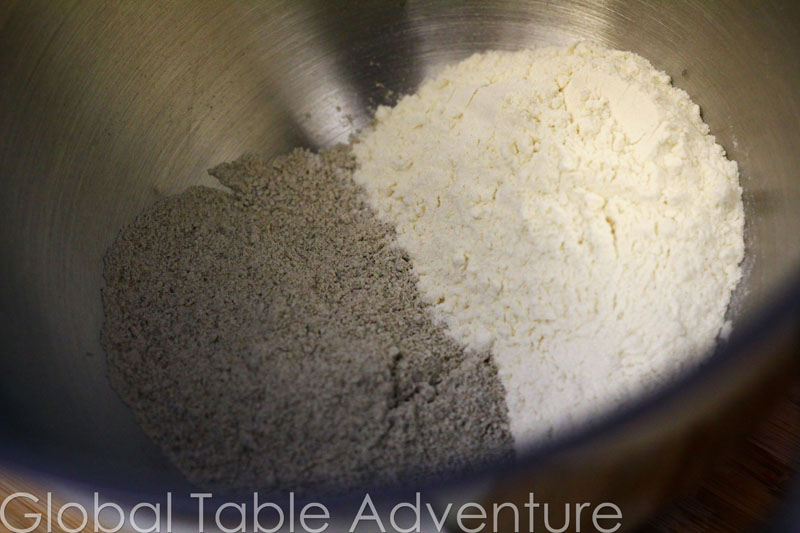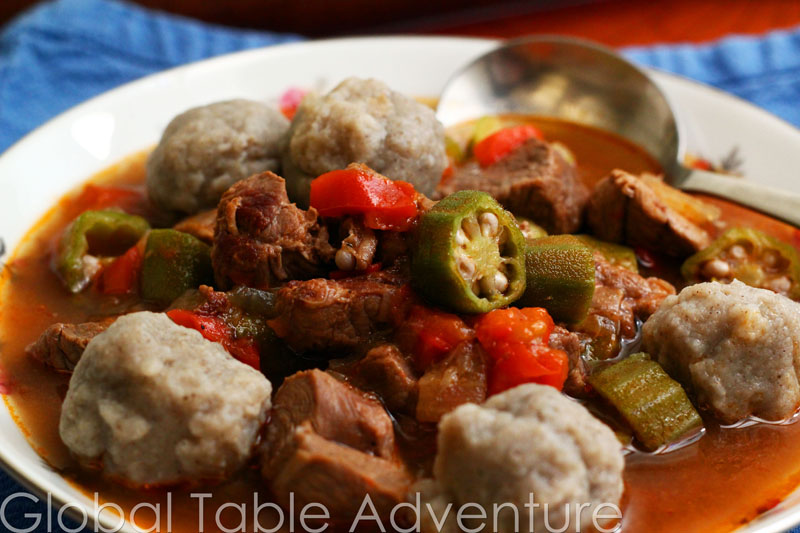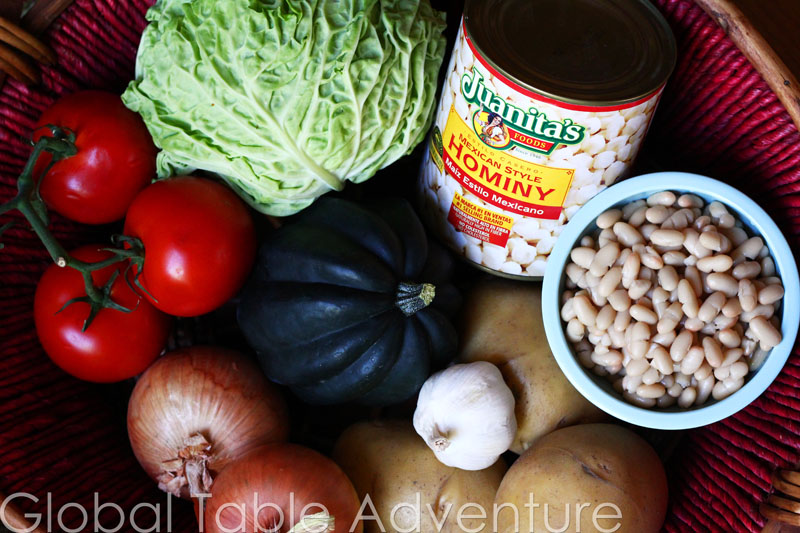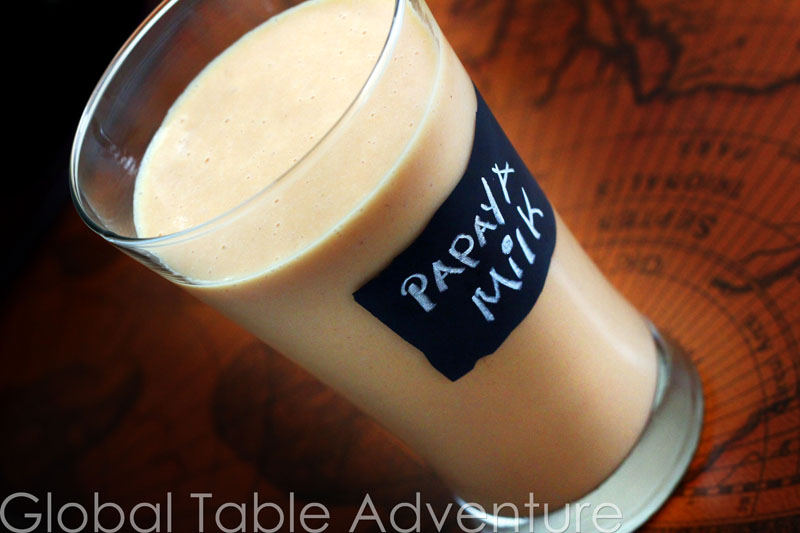
Serves 2 Thick, creamy, and spicy, this drink popular in Northern Chad is refreshing and healthy. Ingredients: 4 cups cubed papaya (if fresh is unavailable you can use 2 cans, drained) 2 cups milk 3 Tbsp sugar 1/4 tsp cardamom pinch ginger 1-2 cups ice, as desired Method: Gather your ingredients. First the beautiful papaya… drained and ready for the blender… Then the spices. Start off with just a little and add the full amount if you can handle it! 🙂 Dump into a blender with some cold milk… And ice, to taste. You can make this drink as thick or as thin as you like. Make it on a wickedly hot day, or a balmy night. Or right this minute. Spiced Papaya Milk Votes: 0 Rating: 0 You: Rate this recipe! Print Recipe Thick, creamy, and spicy, this drink popular in Northern Chad is refreshing and healthy. CourseDrinks, Sweets Lifestyle5-ingredients or less, Vegetarian Food TypeCold Drinks, Fruit, Non-Alcoholic Drinks Servings 2 people Servings 2 people Spiced Papaya Milk Votes: 0 Rating: 0 You: Rate …
Read More
Makes about 2 cups Raw seeds give Egusi sauce grassy flavor and a little bit of texture. The sauce is popular in central Africa, and can be served over vegetables, meats, and fish. Ingredients: 1 small onion 1 tomato 1 chili pepper (I used a poblano from my garden, but you can go as spicy as you want with this recipe) salt red chili powder, to taste 1 1/2 cups ground egusi 1/2 cup water (or as needed) Method: Hunt down some ground melon seeds. I found these at our local African market. Latino stores have pepitas, or pumpkin seeds, which are an acceptable substitute. In a food processor, add tomato… Coarsely chopped onion … And a chili pepper. I left the poblano on the plant long enough that it turned red. The extra time on the plant made it sweeter 🙂 Puree everything together… Add it to a small pot with the egusi… Some salt and pepper… And water… Things don’t look so tasty here… but as the water mixes in, things smooth out. …
Read More
Happy Saturday! Nothing like starting your day off with a little grubworm stew… And here are some images of Central African Republic’s land…
Read More
Hope you have a lovely day! A day in the life of a street corner in Chad: A tourist video (in French): Cooking For Dad’s Images of Chad:
Read More
I bought an apron this summer. It was time to face facts. I’m 31 years old, I’m a mess in the kitchen, and I’m not getting any cleaner. Flour is probably my only regular fashion accessory (although I do love necklaces). In addition, flour is almost always my only chance at “makeup.” As I twirl through the kitchen, I regularly dust flour on my nose, through my hair, and – yes – even on poor little Ava. She’s really a good sport though – she hardly ever notices. So, in honor of flour’s persistent role in my life, let’s talk … flour. This photo shows millet and all-purpose, wheat flour. Around the world, people use all sorts of flour in their food, depending on access to native plants, special diets, and basic needs. In Africa, the most common are flours are Millet, Cassava, Tapioca, Teff, and wheat. In day to day life, flour is typically used to make one of the following items: porridge thick and starchy fufu dumplings fried beignets/doughnuts About flour in this …
Read More
Serves 2-3 Amazingly enough, Keith had never had lamb before we embarked on our Adventure to eat food from around the world. This stew is so fresh and flavorful it won him over immediately. Serve with millet balls. The key to making good lamb stew is to simmer -never boil – the meat. For the first hour the meat will seem tough and chewy but, incredibly, in the second hour even the toughest cut softens, tenderizes and gets that “melt in your mouth” quality that makes stew completely irresistible. Ingredients: vegetable oil 1 1/2 lb lamb, cubed 1 large onion, chopped 1 bell pepper, cut into strips 1 tsp paprika 1 Tbsp tomato paste 4 cups water, or as needed 1/2 lb chopped okra Method: Heat a little oil in a medium pot. Brown lamb – do not crowd. Brown in small batches if needed. When done, return all the meat to the pot and crank the heat to get things moving. Add onion, bell pepper, paprika and tomato paste. I emptied out my paprika jar …
Read More
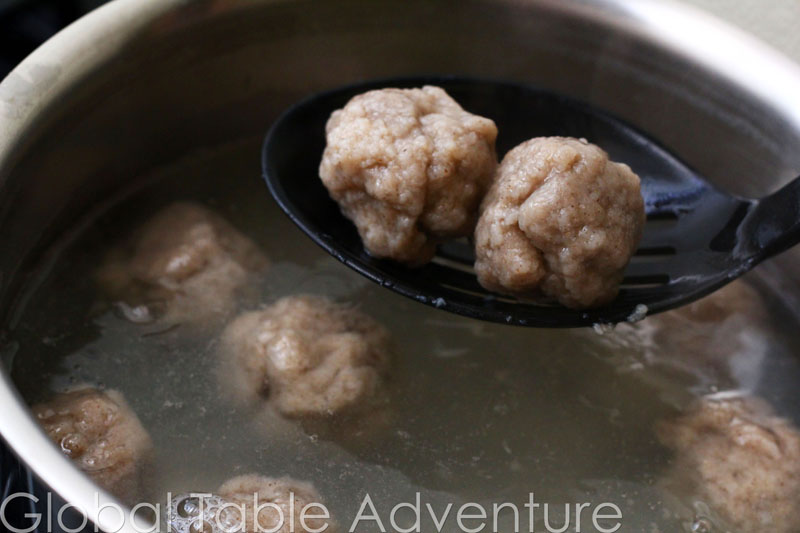
Serves 2-3 Millet flour tastes like wheat flour on steroids. These dense, rather pasty balls are traditional in parts of Africa, particularly central and eastern. They add body and substance to any number of stews and sauces. Ingredients: 1/2 cup flour 1/2 cup millet flour (available at some health food stores and African markets) 1/2 cup water Method: Combine all ingredients in the top of a double boiler. Once everything is mixed together, it will be pasty and sticky. Cover and cook over double boiler for about 30 minutes, or until it looks somewhat dried out, but still pasty and sticky. Meanwhile, bring a pot of salted water to boil. Drop in balls of dough and simmer until they float, about ten minutes. They’ll be dense – perfect filler for a hungry tummy. Serve with sauces or stews, like this Lamb Stew from Chad. Millet Balls for Sauces & Stews Votes: 0 Rating: 0 You: Rate this recipe! Print Recipe Millet flour tastes like wheat flour on steroids. These dense, rather pasty balls are traditional …
Read More
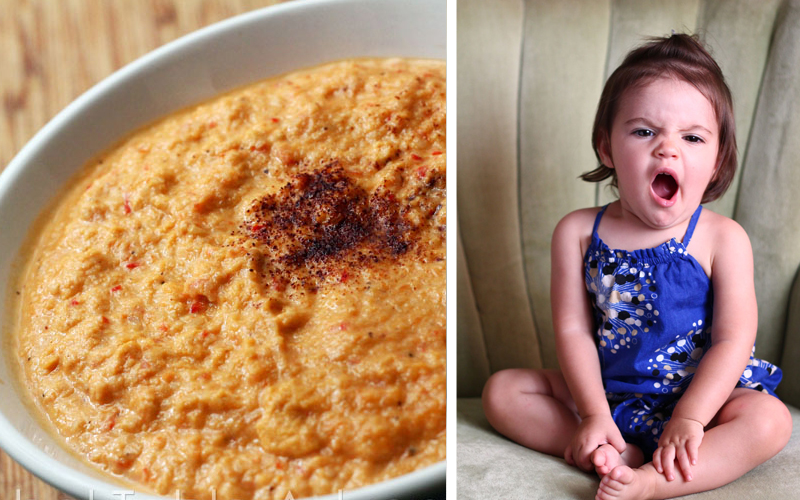
This week we’re eating a double feast from two neighboring countries – Central African Republic and Chad. I had a lot of time to ponder our menu, as there is little else to do while tossing in feverish delirium. Thank goodness we have a good African market in Tulsa, where I can find casssava leaves and ground melon seeds… and really explore the flavors of Africa. CENTRAL AFRICAN REPUBLIC Stewed Cassava Leaves [Recipe] Dark green leaves from the cassava plant stewed with tomato, onion, and peanut butter. Egusi Sauce [Recipe] Ground melon seeds cooked into a sauce with onion, tomato, and chili pepper. We served it with grilled chicken, but this sauce can be served over rice, vegetables, or other meats. Sweet Peanut Butter Rice (Bouiller) [Recipe] White rice sweetened with sugar and natural peanut butter. CHAD Lamb Stew with Okra [Recipe] Pieces of lamb slowly simmered with onion, bell pepper, and okra. Millet Balls [Recipe] A blend of white and millet flour cooked in a double boiler, then formed into balls and simmered. Spiced …
Read More

What a difference a few miles can make. Chad is divided into three main geographic zones – steamy Sahara dessert in the north, the central Savannah, and semi-tropical south. As the landscape changes, so too does the diet. From the north, to the south, very few cultural similarities connect the people of Chad. Northern Chad In northern Chad the people enjoy a diet rich in meat, particularly lamb. Savory pieces of meat might be grilled or stewed with vegetables, such as okra, peppers, onions, and tomatoes (recipe). Many dishes in the north are prepared with yogurt, butter, and milk. In fact, milk stands line the streets in Northern Chad – where busy shopkeepers blend tropical fruits like papaya and mango with milk, into refreshing beverages (recipe). Southern Chad Central and Southern Chad enjoy great quantities of fish, thanks to the plentiful waters of Lake Chad and the Chari River. Meat is not readily available and, with less emphasis on dairy products, lemonade stands dot the countryside instead of milk stands. General Food & Drink A …
Read More
The dusty, rolling plains of Central African Republic (CAR) lead to fertile river beds in the south, and sandy desert in the northeast. Many people live on stewed greens, cooking whatever is available, including cassava (recipe), spinach, or kale. Groundnut butter (a.k.a. peanut butter) is used to add flavor and protein to food when meat is unavailable. Most often, greens are served with rice or foutou – a pasty mash of plantain or cassava. Groundnut butter is also used to add flavor to local desserts. Sometimes the creamy spread is cooked into sweetened rice for a particularly addictive treat which looks like tan rice pudding (recipe). Egusi, or melon seed, is particularly popular in Central African Republic. When finely ground, combined with hot chili peppers, tomato, and onion, the seed makes a thick sauce (recipe) to add interest to plantains, yams, rice, fish or grilled meat.
Read More
My mom used to slather up dates with cream cheese for us kids. I hated the roach-looking things and never could stomach one. So, what exactly posessed me to try the avocado and date dip is beyond me. I suppose I’m trying to keep it real. Stretch my horizons. Expand my palate. Well, guess what? It worked. The sweet hint of dates actually works inside avocado! Hurrah. Score one for team Sasha. But no way I’ll ever eat a date with cream cheese. That battle’s long been lost. Peasant’s Cachupa [Recipe] What I liked most about this dish: The beauty of Cachupa is that you can use whatever ingredients you have on hand to make your own version – don’t like acorn squash? Fine, put in sweeter pumpkin. Wish it had some collard greens? Sounds wonderful – go to town! Too vegan for your tastes? No problem – you can make this stew a meat-lover’s delight, by adding in smoked and traditional Portuguese sausages. As for our version – the flavor of the hominy and …
Read More
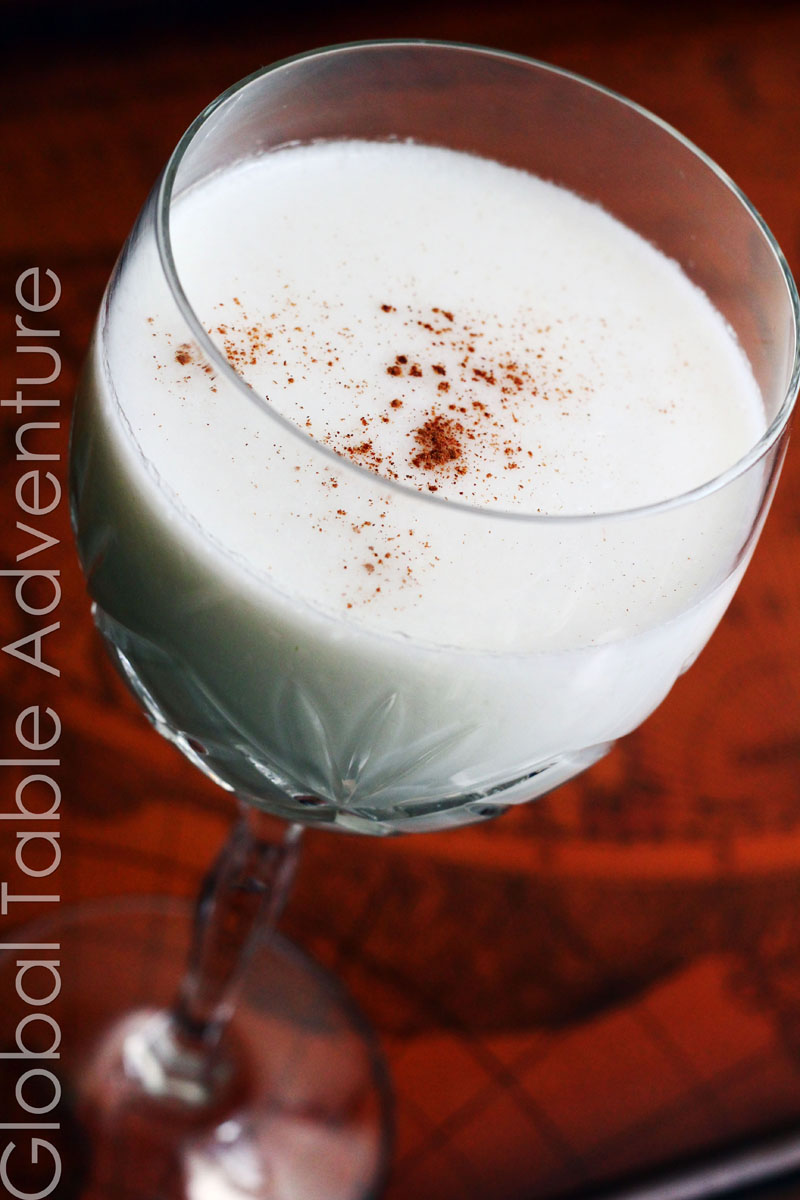
Serves 2 Intended to be drunk cool, but not cold, our creamy Cape Verdean chiller will transport you to the islands. A favorite with Cape Verdean children. The coconut is a common ingredient in the Cape Verde islands -in the 1600’s the coconut was already being transported to America via west African and Cape Verde… (source) NOTE: If you add ice or refrigerate this drink the coconut milk will congeal. Ingredients: 1 cup coconut milk 2 cups milk cinnamon, for garnish Method: Swirl together coconut milk with milk. Sprinkle with cinnamon and enjoy. Let the dance begin! I don’t know about you, but these pictures make me insanely happy. All drinks should be this fun to make. Coconut Milk Chiller Votes: 0 Rating: 0 You: Rate this recipe! Print Recipe Intended to be drunk cool, but not cold, our creamy Cape Verdean chiller will transport you to the islands. A favorite with Cape Verdean children. The coconut is a common ingredient in the Cape Verde islands -in the 1600’s the coconut was already being transported …
Read More




